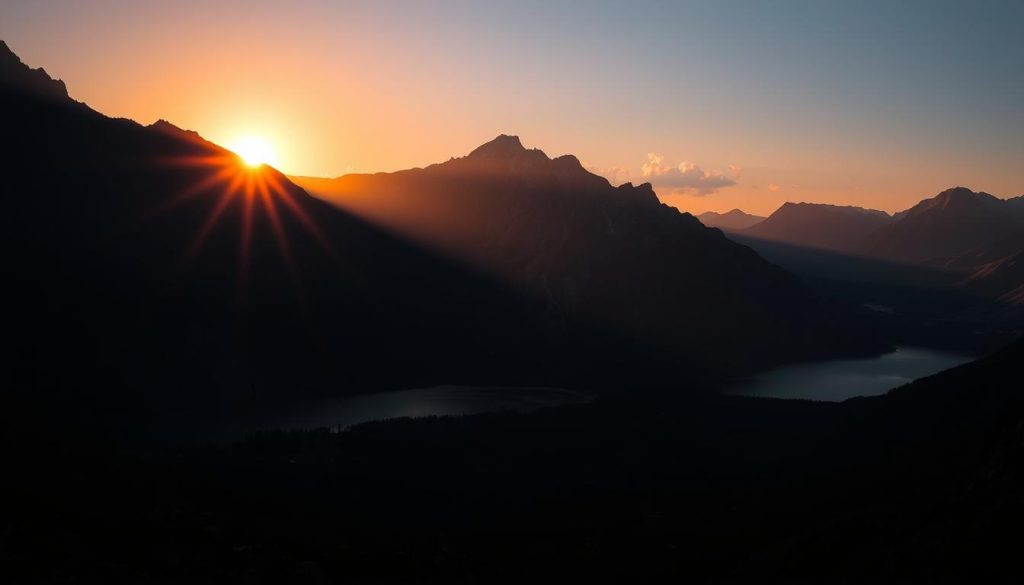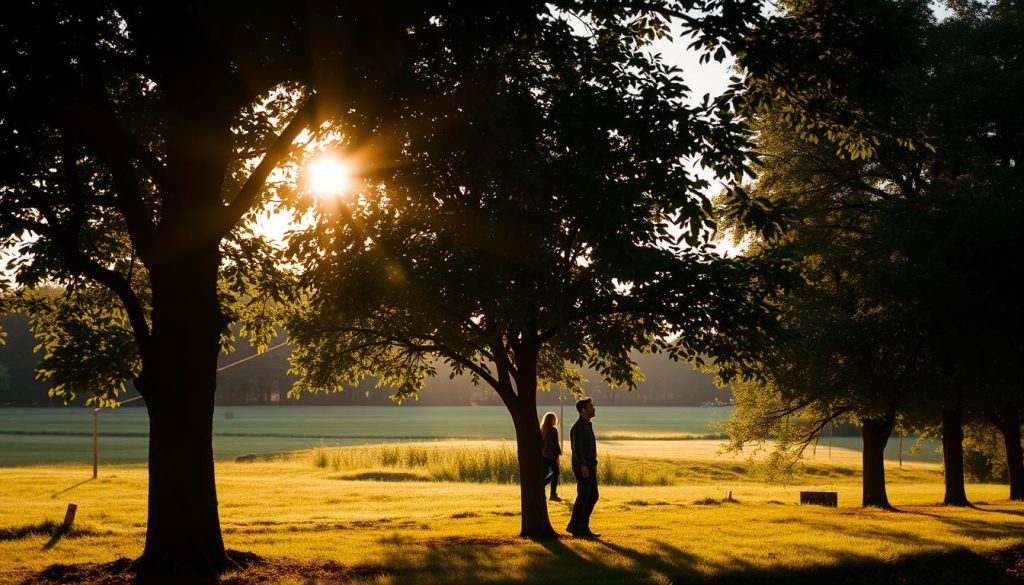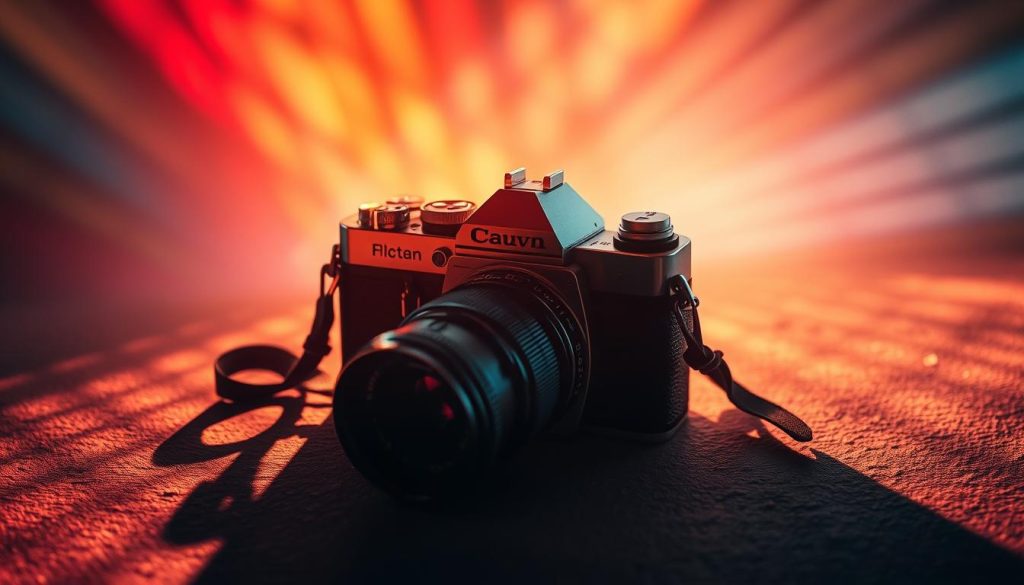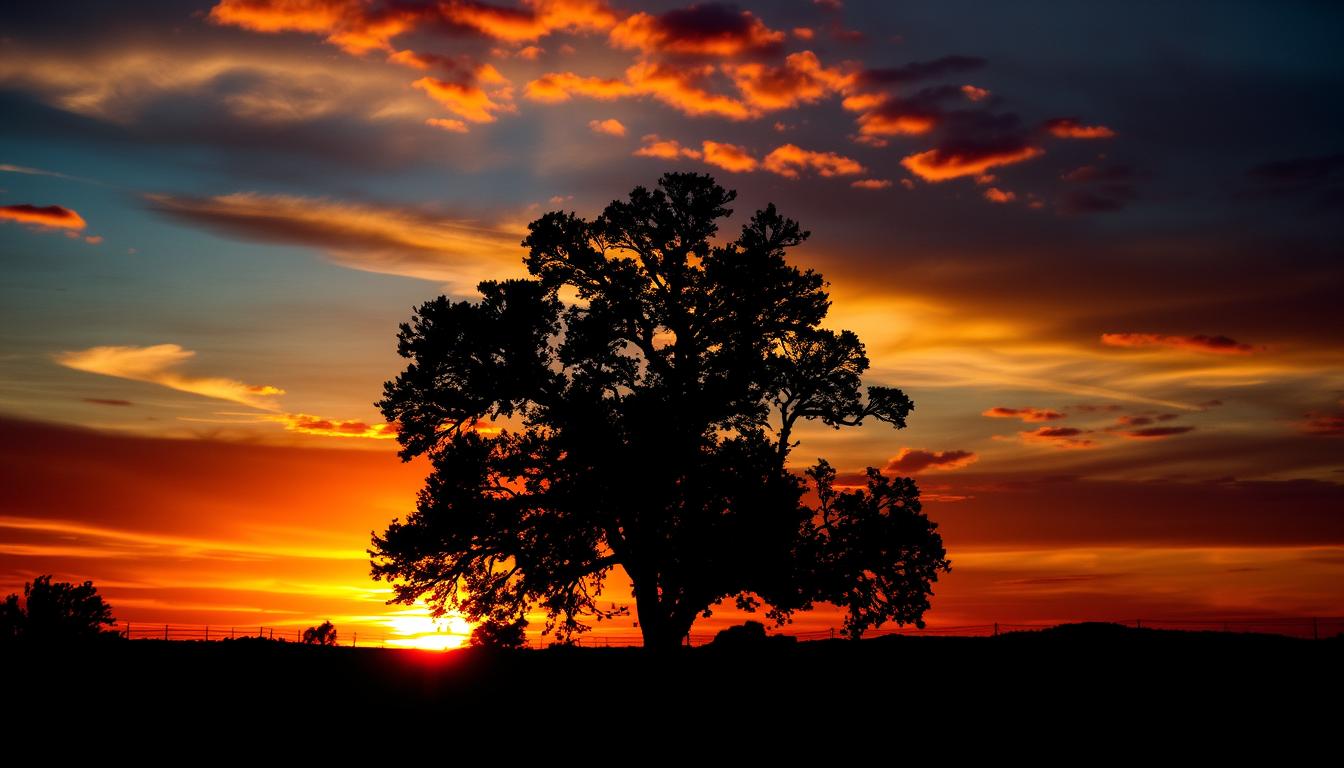As a photographer, I’ve learned how big of a difference contrast and lighting make. They can change a simple photo into a stunning one. I’ll share my knowledge on contrast in photography, lighting techniques in photography, and how to use them to make amazing photos.
Light and shadow can create drama in photos. Using highlights and lowlights is key. By learning about photo composition and manipulating light and shadow, you can improve your photos. This will make your photos stand out and grab people’s attention.
Understanding the Basics of Contrast and Lighting
To make great photos, knowing contrast and lighting is key. Contrast is the light and dark parts of a photo. Lighting affects how bright or dim these parts are. I’ll explain how contrast and lighting work together to make your photos look amazing.
What is Contrast in Photography?
Contrast in photos is the light and dark differences. High contrast photos have big light and dark areas, making them bold. Low contrast photos have softer tones, looking more even.
The Importance of Proper Lighting Techniques
Lighting is very important in photos. It changes how bright or dim your subject looks. Natural light, like sunlight, adds warmth. Artificial light, like studio lights, can make photos more dramatic.
Knowing how to use different lights is crucial for great photos. Using shadows and highlights adds depth and contrast. This makes your photos more interesting and impactful.
| High Contrast Photography | Low Contrast Photography |
|---|---|
| Dramatic, bold, and eye-catching | Subtle, even, and soft |
| Significant difference between highlights and shadows | Smaller range of tones |
| Can create a sense of depth and drama | Tends to be more calming and serene |
Learning about contrast and lighting will help you make stunning photos. Whether you like bold high contrast or soft low contrast, mastering these skills will improve your photography.
Contrast and lighting in photography

Balancing contrast and lighting is key in photography. These elements help create depth, drama, and focus in your images. Learning to use them can make your photos stunning and impactful.
Contrast is the difference between light and dark in an image. It’s crucial for depth and drawing the viewer’s eye to your subject. Using contrast well can use contrast and light to create depth and use contrast and light to draw attention to key parts of your photo.
Lighting is the base for contrast. The quality, direction, and intensity of light greatly change your photo’s mood. Balancing contrast and lighting is vital for the look and impact you want in your images.
Understanding contrast and lighting is important, whether using natural or artificial light. For instance, high key vs low key photography uses these elements to create different moods and looks.
Mastering contrast and lighting can make your photos deep, draw attention, and evoke emotions. It’s a basic skill every photographer should work on and improve.
Techniques for Manipulating Contrast and Light

Utilizing Natural Light for Stunning Results
Learning to use natural light in photography is a big step up. It lets you create amazing images. You’ll learn how to work with the sun’s light, shadows, and highlights. This will take your photos to a whole new level.
Controlling natural light is key. You need to watch the light’s direction, strength, and quality. By placing your subject right, you can get great contrasts and shadows. This makes your photos look deep and interesting.
Changing natural light is also important. You can use tools like reflectors and diffusers to shape the light. This helps you get the right mix of light and shadow. Backlighting can make your photos look magical, and playing with shadows and highlights can make them bold.
Mastering natural light in photography opens up many creative doors. It doesn’t matter if you’re taking portraits, landscapes, or still life. Knowing how to use the sun’s light lets you make photos that really grab attention.
Creative Approaches to Contrast and Lighting

Once you know the basics of contrast and lighting, it’s time to get creative. Think outside the box to capture unique and captivating images. I’ll share some favorite ways to use contrast and light in new and exciting ways.
Embracing High Contrast for Dramatic Impact
Creating high-contrast black-and-white images is a favorite technique of mine. Stark contrasts add drama and intensity to your photos. Try different lighting setups to highlight the contrast and make a strong visual impact.
Exploring Low-Key Lighting for Moody Atmospheres
Low-key lighting is great for moody, atmospheric images. Use a little light and control shadows to create intimacy and mystery. This works well for portraits, still lifes, and landscapes to set a mood or emotion.
Harnessing Color to Enhance Contrast
Color can be just as powerful as black-and-white for contrast. Try bold, vibrant colors or soft, muted ones for unique images. Color can guide the viewer’s eye or add tension and drama.
Embracing Experimental Lighting Setups
Don’t be afraid to try new lighting setups. Use colored gels, reflectors, or even household items. This way, you can find new ways to play with contrast and light.
Remember, creativity in contrast and lighting comes from being open-minded and experimenting. With practice and imagination, you’ll make unique and captivating images that show your artistic vision.
Post-Processing Techniques for Enhancing Contrast and Light
Mastering contrast and lighting in-camera is key. But, post-processing can also enhance your images a lot. I’ll share my favorite techniques for adjusting contrast and light. You can use Adobe Photoshop, Lightroom, or other software to make your photos stand out.
Adjusting contrast and light is a powerful tool for me. In Photoshop, I use Levels or Curves to tweak highlights, midtones, and shadows. This makes my images more striking and impactful.
In Lightroom, the Develop module has many tools for contrast and light. I use Clarity, Vibrance, and Saturation to add depth. Exposure, Highlights, Shadows, and White and Black Point controls let me fine-tune the tone. This way, I can achieve different looks, from natural to dramatic.

